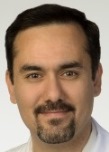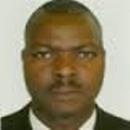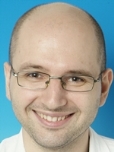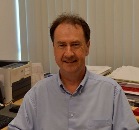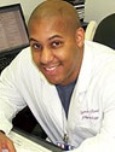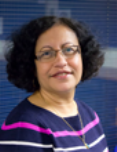Theme: Developing trends and new advances in stroke treatment & prevention
Stroke-2015
Omics International Conference series would like to welcome all the Directors, Heads, Deans, Professors, Scientists, Researchers, Doctors and students of neurology department for “Global Summit on Stroke “on August 03-05, 2015 at Birmingham, UK with the theme of “Developing trends and new advances in stroke treatment & prevention”.
Strokes occur due to problems with the blood supply to the brain either the blood supply is blocked or a blood vessel within the brain ruptures. A stroke is a medical emergency, and treatment must be sought as quickly as possible. As a result, brain tissue becomes damaged or dies, affecting speech and motor capabilities. The stroke international Summit will showcase a cutting-edge educational and scientific experience, focusing on the latest developments in stroke prevention, acute management and restorative care after stroke. The description of global summit on stroke presents the state of knowledge on stroke epidemiology, etiologic basis, treatment, and rehabilitation. Since the conference, enthusiasm for and activity in stroke treatment has increased, spurred by the encouraging awareness.
Birmingham is the most populous British city outside London with 1,092,330 residents. The city is a major international commercial centre, ranked as a beta− world city by the Globalization and World Cities Research Network, and an important transport, retail, events and conference hub. It is the third most common cause of death in the UK, and one of the most important causes of significant adult disability. Each year in the UK, approximately 120,000 people have a first stroke, 30% of whom die within a month. In addition, about 30,000 recurrent strokes occur. The risk of having a stroke before the age of 85 years is one in four for men, and one in five for women. There are more than 6.4 million stroke survivors in the United States. Every year, there are about 800,000 strokes in the United States so, one stroke every 40 seconds.
The cost of stroke care is high, with an estimate in the National Audit Office report of £7 billion per year.
Scientific Sessions:
Track 1: Neurological disorders
Neurological disorders are those that involve impairments in the nervous system. All of the body's movements and functions are coordinated by the nervous system and there are more than 600 diseases of the brain, spine and the nerves that connect them such as brain tumor, Parkinson's disease, epilepsy, stroke and less familiar ones such as front temporal dementia. Hundreds of millions of people worldwide are affected by neurological disorders and nearly 6.2 million people die because of stroke each year; over 80% of deaths take place in low- and middle-income countries. The magnitude and burden of neurological mental and behavioral disorders is huge and affecting more than 450 million people globally. The classification of Neurological disorders includes Alzheimer’s disease (AD), Epilepsy, Multiple sclerosis, Parkinson’s disease, Migraines and the neurological disorders can result from a number of causes including Lifestyle-related causes, Infections, Genetics, Nutrition-related causes, Environmental influences, Physical injuries. The signs and symptoms can vary, depending upon type of disorder as well as specific area of the body that is affected.
There are number of medical examinations are present that can be used to diagnosis for the neurological disorders like genetic screening, a neurological exam, brain scans and other tests. Treatments for Neurological Disorders includes surgeries (such as procedures to remove tumors), device-based therapies, medications (topical, oral, and intravenous), physical therapy, and rehabilitation.
Track 2: Etiology of stroke and risk factors
Risk of stroke and second stroke is influenced by a number of factors like conditions, behavior, and family history and other characteristics. They fall into three groups: Stroke risk factors that you cannot control such as Age, Gender, and A family history of stroke. Medical stroke risk factors like Transient Ischemic Attack (TIA), Atrial Fibrillation, Diabetes, and Fibro Muscular Dysplasia (FMD). Lifestyle stroke risk factors that you can control such as, cigarette smoking, high cholesterol, Obesity or being overweight, poor diet and lack of exercise and drinking too much alcohol. A stroke can sometimes cause temporary or permanent disabilities depending on how long the brain lacks blood flow and which part was affected. The Complications may include paralysis or loss of muscle movement, Memory loss or thinking difficulties, difficulty talking or swallowing and emotional problems, pain, changes in behavior and self-care ability. To eradicate these stroke risk factors the stroke meetings 2015 promise to attract acclaimed experts in stroke from around the world and will showcase a cutting-edge educational and scientific experience, focusing on the latest developments in stroke prevention, acute management and restorative care after stroke
Track 3: Preventive Stroke Strategies
Prevention of stroke may be classified as primary prevention if there is no previous history of stroke or transient ischaemic attack (TIA) and secondary prevention if there has been such an event. Primary prevention of stroke includes lifestyle modifications and measures to control cholesterol levels, diabetes mellitus, blood pressure and atrial fibrillation. Reducing blood pressure in patients with hypertension prevents both hemorrhagic and ischemic stroke. The research studies suggest that higher cholesterol levels are associated with an increased risk of ischemic stroke and treatment with statins (3-hydroxy-3-methylglutaryl coenzyme A reductase inhibitors) may reduce the risk of fatal and nonfatal stroke. Although high-quality evidence linking tighter glucose control with stroke reduction is lacking good glucose control and aggressive treatment of hypertension and hyperlipidemia in patients with diabetes mellitus. The risk of stroke in patients with atrial fibrillation and the role of anticoagulation depend on factors such as age and the presence of comorbid conditions. Preventive medications for Stroke includes Anti-platelet drugs, Anticoagulants, Aspirin, Lipid-lowering drugs etc. Secondary stroke prevention is focused on this high risk population in order to prevent or delay future disease events, achieve functional and clinical improvement, promote wellness and enhance quality of life. Secondary stroke prevention services should include prompt access to the four components like evaluation of the event, initiation of medications implementation of interventions, and modification of stroke risk factors.
Track 4: Vascular and brain imaging
Stroke is the third leading cause of death in Europe, USA, Canada and Japan and is the primary cause of adult disability and in this 80% are ischemic such as cardiogenic, atherosclerotic, haemodynamic, lacunar and cryptogenic. Cranial CT is the most useful initial imaging modality to differentiate between ischaemia and haemorrhage, and to exclude stroke mimics. Vascular imaging is a key component in the brain stroke 2015 International Conference for comprehensive stroke diagnosis and cause based therapy. Siemens supports with the full spectrum of angiography systems available today. Siemens analysis tools reduce the information load by removing distracting visual input (e.g. skull base) in intra-arterial (X-ray), CT, MR, and US angiography. Consequently it assists in focusing on vascular changes and interventional procedures such as clot removal, thrombolysis and stent implantation. Tools for imaging of brain function includes Magnetic resonance spectroscopy, Single photon emission computed tomography, Functional magnetic resonance imaging (fMRI), Magnetoencephalography (MEG).
Track 5: Hemorrhagic Stroke
Hemorrhagic stroke involves bleeding within the brain, which damages nearby brain tissue and there are two types of hemorrhagic stroke: intracranial hemorrhage (ICH), which occurs with bleeding into the brain tissue and subarachnoid hemorrhage (SAH), which occurs with bleeding into the subarachnoid space beneath the arachnoid mater of the meninges. Causes of hemorrhagic stroke include Aneurysms, arteriovenous malformation (AVM), and Cerebral amyloid angiopathy. Prevention is extremely important because treatment for hemorrhage-related brain injury often cannot reverse brain damage. Most of hemorrhagic stroke cases are associated with specific risk factors such as high blood pressure, cocaine use and smoking. Controlling blood pressure and avoiding smoking and cocaine can reduce your risk for brain bleeding and surgery to correct blood vessel abnormalities such as aneurysms or AVMs is sometimes recommended to prevent bleeding. Hemorrhagic stroke requires prompt medical attention and it can develop quickly into a life-threatening situation. Goals of treatment includes save the person's life, relieve symptoms, repair the cause of bleeding, prevent complications, start rehabilitation therapy as soon as possible.
Track 6: Heart and brain
A heart attack occurs when blood flow to a part of the heart is blocked usually by a blood clot. A stroke is a brain attack, cutting off vital blood flow and oxygen to the brain and it happens when a blood vessel feeding the brain gets clogged or bursts. In Western countries, stroke is the first cause of disability and second cause of death. Cardiogenic embolism is the most frequent cause of recurrent strokes and Nonvalvular atrial fibrillation (NVAF) is the most common source of cardiogenic embolism with a stroke recurrence rate of about 10% per year. Randomized trials have shown that anticoagulation and aspirin are safe in patients with NVAF, leading to 70% and 22% risk reduction of strokes respectively. To improve therapeutic techniques, the stroke meeting of patients, clinicians, scientists, researchers and other health care professionals promises to develop into Europe’s highest quality scientific programme across a range of stroke specialties. Many people for anticoagulation fail to receive the appropriate treatment for primary and secondary prevention. The common heart attack and stroke risk factors include high cholesterol, smoking, family history, diabetes, high blood pressure, sedentary lifestyle and atrial fibrillation. High blood pressure is generally considered the most common controllable risk factor for stroke but atrial fibrillation is the most powerful and new treatments for atrial fibrillation may make taking the blood thinner coumadin unnecessary and also closing a small hole in the upper chamber of the heart is now possible without surgery and this hole is associated with stroke in young people.
Track 7: Pediatrics: Stroke and metabolic disorders
Stroke is more common in boys than girls even after controlling for differences in frequency of causes trauma and these appears to be a predominance of stroke in black children. This difference remains true even after accounting for sickle cell disease patients with stroke and moreover seizures are common in both ischemic and hemorrhagic strokes. They occur in up to 50% of children with strokes are not restricted to any age group and are not limited to any specific seizure type. A stroke or cerebral vascular accident (CVA) in children is typically considered to be a rare event. The reported incidence of combined and hemorrhagic ischemic pediatric stroke ranges from 1.2 to 13 cases per 100,000 children under 18 years of age.
Acute Ischemic Stroke is more common in the younger age group whereas hemorrhagic strokes occur more frequently in older children and adults. Sickle cell disease (SCD) is a very common cause of pediatric stroke and is occurring in 285 cases per 100,000 affected children. Arteriovenous malformations (AVM) are the most common cause of hemorrhagic stroke after infancy, but can also cause thrombotic stroke. AVM may be associated with neurocutaneous syndromes such as Osler-Weber-Rendu syndrome, Sturge-Weber disease, Neurofibromatosis. The Moyamoya is another important vascular cause of childhood stroke and is associated with conditions such as sickle cell disease, Down syndrome and neurofibromatosis.
Noncontrast head computed tomography (CT) is sensitive for acute bleeding and should be obtained emergently to exclude a cause for hemorrhagic stroke. Despite increasingly advanced imaging techniques the adult literature suggests that a lumbar puncture is still needed to rule out a subarachnoid hemorrhage. The management of stroke in children is less-studied and largely extrapolated from the adult literature with the only randomized controlled trials for the treatment of acute stroke in children in the setting of SCD. Prevention of rebleeding includes correction of coagulation defects and hematologic disorders. Thrombolytic therapy in children with ischemic strokes must be carried out in a guarded and judicious manner.
Track 8: Stroke and Cancer- A Complicated Relationship
Cancer and ischemic stroke are two of the most common causes of death. However, the main pathomechanisms of stroke in cancer patients are not well known and can only be established based on accurate knowledge of the characteristics of cancer and their related strokes. Ischemic stroke and cancer independently carry a large burden of morbidity and mortality as the second and fourth leading cause of death and they each represent an enormous expenditure as a percentage of health care resources, manifested by lost productivity and disrupted family structures due to death and dependency. Cancer patients frequently have strokes, both from traditional risk factors and from mechanisms thought unique to malignancy. The most frequent causes of stroke in cancer patients are traditional cerebrovascular risk factors such as hyperlipidemia, hypertension, diabetes, tobacco use and atrial fibrillation. Cancer patients are at increased risk for stroke from direct and indirect effects of their malignancy and some tumors are at high risk for cerebrovascular complications. The stroke mechanisms are specific to cancer such as occlusion of cerebral vessels by tumor and compression, coagulopathy predisposing to hemorrhage, thrombosis and treatment-related atherosclerosis. Special consideration for these mechanisms needs to be made when evaluating cancer patients and treatment aimed at secondary prevention needs to incorporate overall prognosis and goals of care.
Track 9: Vascular surgery and neurosurgery
The Neurovascular surgery specializes in the management of complex central nervous system vascular disorders including arteriovenous malformations, aneurysms, cavernous angiomas and carotid and intracerebral stenosis. Surgery and vascular procedures can be used to prevent stroke to treat or to repair damaged blood vessels or malformations in and around the brain. Carotid endarterectomy is a surgical procedure in which a surgeon removes fatty deposits or plaque from the inside of one of the carotid arteries and this procedure is performed to prevent stroke. The carotid arteries are located in the neck and are the main suppliers of blood to the brain. In addition to surgery, a variety of techniques have been developed to allow certain vascular problems to be treated from inside the artery using specialized catheters with the goal of improving blood flow. Vascular is a word that refers to blood vessels, arteries, and veins that carry blood throughout the body. Angioplasty is widely used by angiographers to open blocked heart arteries, and another procedure used to prevent stroke is called stenting. Angiographers also sometimes use clot removal devices to treat stroke patients in the very early stage.
Track 10: Current Breakthrough in Stroke Research
The randomized clinical research study shows a dramatic improvement in restoring blood back to the brain in arteries. This study involved minimally invasive clot procedure known as stent throbectomy and this standard clot procedure called as tissue plasminogen activator. In patients with more severe strokes, the each trail shows the striking benefit of catheter-based clot removal to restore blood flow in brain arteries. This can be used to improve the treatment for heart attacks known as acute stroke therapy. There is another new treatment for the stroke shown to be very effective that and it will be used as a part of standard stroke care. The results of a new study led by scientists at the University of Calgary, and this clot-retrieval procedure called as endovascular treatment, used to decreased disability among people who experienced acute ischemic stroke. Brain damage caused by strokes could be repaired by a new treatment called 'one of the most exciting recent developments in stroke research' that could be changed thousand lives a year which involves injecting a patient's stem cells into their brain.
Conference Highlights
- Epidemiology of Stroke
- Stroke Risk Factors and Their Impact
- Preventive Stroke Strategies
- Treatment for Stroke
- Imaging and Diagnosis
- Hemorrhagic Strokes
- Acute Stroke Management
- Stroke related Dementia
- Pediatric Stroke
- Stroke and Cancer- a review
- Brain tumour or Metastasis
- Atrial Fibrillation and Stroke
- Brain Arteriovenous Malformations
- Women and Stroke
To share your views and research, please click here to register for the Conference.
To Collaborate Scientific Professionals around the World
| Conference Date | August 03-05, 2015 | ||
| Sponsors & Exhibitors |
|
||
| Speaker Opportunity Closed | Day 1 | Day 2 | Day 3 |
| Poster Opportunity Closed | Click Here to View | ||
Useful Links
Special Issues
All accepted abstracts will be published in respective Our International Journals.
- Brain Disorders & Therapy
- International Journal of Neurorehabilitation
- Journal of Neurology & Neurophysiology
Abstracts will be provided with Digital Object Identifier by


